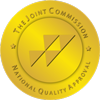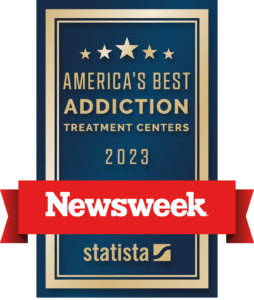The current legal proceedings between Johnny Depp and Amber Heard, wherein Mr. Depp is suing his ex-wife, Ms. Heard, for defamation, have piqued the interest of people across the country the past few weeks. While we will leave the judgement against either party in the matter to the court, we cannot help but recognize the cycle of addiction and trauma as Mr. Depp shared his testimony from the stand.
Johnny Depp testified about his experiences with drugs and alcohol throughout his life, including during his marriage with Amber Heard, revealing trends that are all too common for many in the recovery community.
Among these are:
- how exposure to drugs at an early age impacts future substance use
- the long-term effects of such exposure leads many into self-medication
- the importance of addressing “emotional sobriety”
- how role trauma plays in of return to use instances
- and the impact of toxic relationships for people seeking long-term addiction recovery

The Foundations of Addiction Start in Childhood
Some of the earliest factors leading to substance abuse are often laid in childhood, even if substances are never used until late adolescence or even adult years. Trauma, family situations, and even genetics can all play a role.
Johnny Depp was very open about his past and shared that his introduction to substances happened at an early age, while he was still in his grade-school years. While that may sound shocking to some, Mr. Depp is not alone. In fact, nearly 3 out of every 4 people in recovery began using before the age of 18.1
A common factor influencing addiction in young people is growing up with a parent who struggled with substance use. Studies show that children of addicts are 8 times more likely to develop an addiction.2 Depp shares that he remembers getting “nerve pills” for his mother from her handbag as young as 5 years old. As he got older, his curiosity about his mother’s pills and the way she would “calm down” grew.
“When I was 11 years old I wanted to calm down, and I didn’t know how to. So, I would bring my mom her nerve pill, I would walk away and I would take one myself to escape caring so much [and] feeling so much… to escape the chaotic nature of what we were living through.”
Depp added, “I knew nothing else I could do.”
Learning proper coping skills is essential for young children. When this doesn’t happen effectively, people often turn to other methods to cope. This is what inevitably leads to self-medication.

Emotional Recovery is Just as Important as Physical Recovery
There are many people who enter recovery and simply seek to abstain from using. They believe that removing the substances will be a sufficient solution to their struggles and problems. Rarely do they address the emotional and mental factors that play a role in using, i.e. their “emotional sobriety” or “emotional recovery”.
Emotional recovery is “the idea is that [people] hoping to stay sober over the long haul must learn to regulate the negative feelings that can lead to discomfort, craving and—ultimately—relapse.” 3
Most experts in the recovery and mental health communities agree: a person’s emotional recovery is directly linked to their physical recovery from substances.
When emotional recovery is not maintained, it is nearly impossible to maintain long-term physical recovery. Likewise, when a person takes great care of their emotional recovery, they are infinitely more likely to succeed in their physical recovery. We must get to the root of the problem, or it will only continue growing. If we never acknowledge, process, and experience healing from those past traumas, then we’re leaving ourselves vulnerable to further pain in the future.
You cannot run from your past or your pain.
“One day you’re going to have face those feelings. One day you will have to meet those demons from your youth,” Depp testified.
That is why it’s crucial to successful long-term recovery that we address the issues that caused us to turn to substances in the first place- and to do so with help.

At Sana Lake, a huge part of our continuum of care is our Behavioral Wellness Centers in Maryland Heights and Kansas City, MO. At Behavioral Wellness, members are able to receive outpatient care, continue meeting with a therapist, attend groups, meet with Peer Recovery Coaches, and be part of the Members for Life community of Sana Lake alumni.
It’s here that members are able dive deeper in a safe way, and practically apply what they’re learning through the process with a supportive community around them of both peers and professionals.
Sana Lake’s Director of Extended Care, Kassie Sullins, gets to see the impact of continued care for long-term recovery every day. “They learn day-by-day how to actually deal with the stressors of life as they’re living it. We wouldn’t be able to do that if we didn’t have Behavioral Wellness as a safe place. It’s about giving them the tools and equipping them to be able to deal with those stressors.”
This ongoing care also plays a large role in preventing returns to use, a.k.a. relapses.
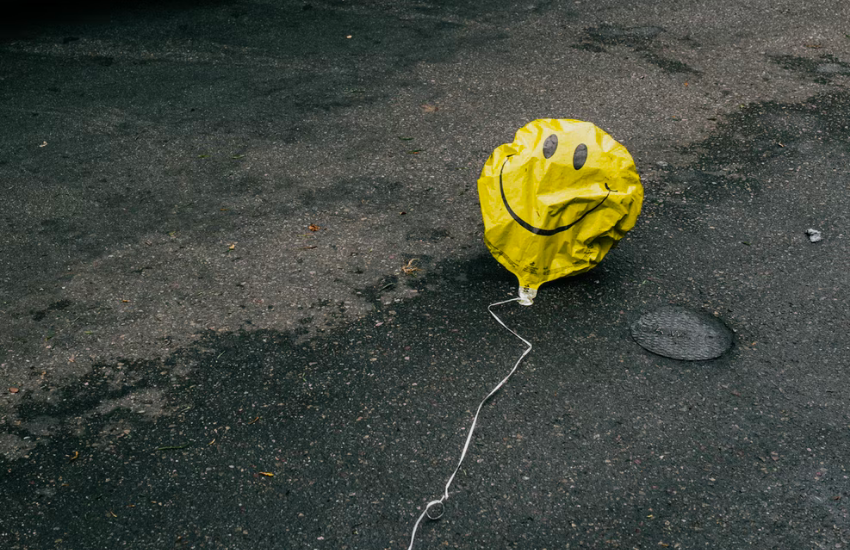
Trauma Can Trigger a Return to Use
Part of Depp’s testimony during the trial was centered around an escalated incident between himself and Ms. Heard that transpired in Australia- the infamous event that ended in Mr. Depp incurring an injury to his finger.
In the midst of the conflict, he reports feeling lost and in disbelief at the situation unfolding.
“I was a mess, I was shaking, I just didn’t understand why all of this was happening.”
Whether Depp was the aggressor or the victim in the conflict, we cannot say. However, it is clear that the situation was escalated, and Mr. Depp responded to the triggers in a way that is common among those with substance use disorders.
“I went behind the bar, [and] I grabbed a bottle of vodka.”
Forfeiting sobriety
Despite having 18 months of sobriety, Depp returned to substances as a coping mechanism. He even disregarded his own advice about “delaying the inevitable” and sought to numb the pain again.
Why? Because traumatic stress can lead to a return to use.
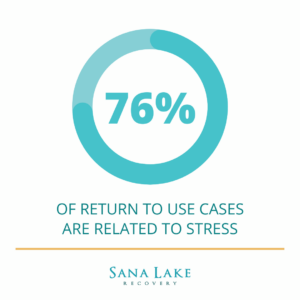
A study published in 2021 found that nearly 60% of patients had a return to use, and that 76% of those cases were triggered by stressful influences.4
When someone has a history of using substances to self-medicate, it’s not surprising that they would resort to those same methods when faced with highly escalated, emotional, or painful situations. Mr. Depp had admittedly used drugs and alcohol for years to “numb the things inside that can plague someone who’s experienced trauma.”
Preventing Relapse & Change
His return to use was, sadly, a statistical probability for a person with a history of addiction and trauma, given the circumstances he was in. However, work in the field of relapse prevention shows that people can successfully prevent a return to use by identifying triggers and potentially risky situations. Those triggers can be people, places, activities, objects, or ideas. Once they’ve identified the triggers, they work with their clinician to build the skills and strategies necessary to avoid or cope with those situations.5
People cannot continue turning to the same solutions they used in their past. They must be willing to make changes.
In his article, “Relapse Prevention and the Five Rules of Recovery”, Dr. Steven Melemis, who specializes in addictions and mood disorders, lists “Change Your Life” as the first of his five rules. “Recovery involves creating a new life in which it is easier to not use. When individuals do not change their lives, then all the factors that contributed to their addiction will eventually catch up with them.”
So what areas of life need to change? Dr. Melemis, countless other professionals, and individuals in the recovery community agree: people and places that trigger using must be avoided.
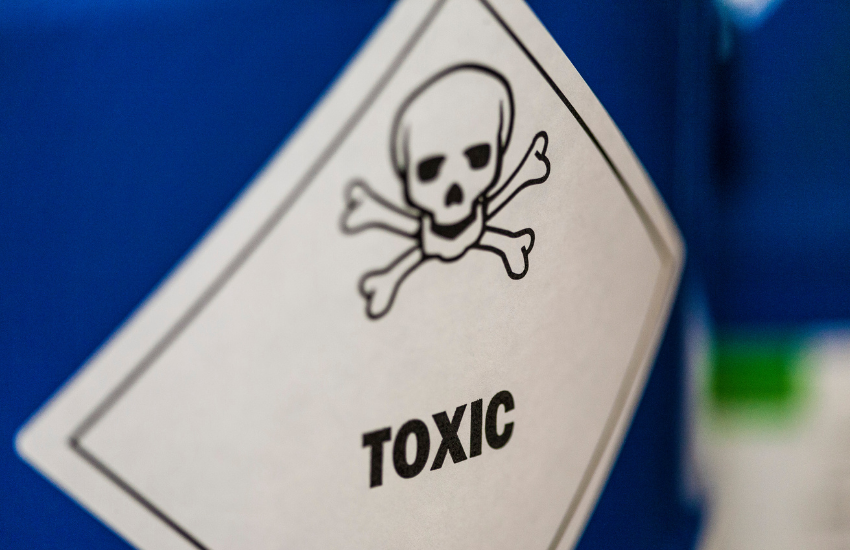
Toxic Relationships are Dangerous- Especially in Recovery
In recovery, people are often encouraged to change their “playgrounds and playmates” if they want to have a solid chance at recovery. That means that they should avoid the situations and people that led them to use, when at all possible.
This can mean no longer frequenting the local pub or club, or saying no to an old friend’s BBQ. This also means that some relationships need new boundaries, or perhaps need to end altogether.
Many in recovery have had to redefine how they interact with friends, family, even parents or spouses. If a friend or family member is not supportive of their recovery, or causes them mental and emotional stress when they’re around, the person in recovery needs to evaluate the situation and find healthy ways to remove themselves from these toxic relationships.
In recovery, it’s a matter of life and death.
While toxic relationships are a cause for concern for all people, not just those in the recovery community, they’re especially impactful for people attempting to heal from addiction and trauma, and maintain sobriety.
A return to use after sobriety can be deadly. Staying away from a relationship could trigger a return to use can quite literally be a matter of life and death.
In the case of Johnny Depp and Amber Heard, it’s clear that their relationship was toxic. While Mr. Depp reports he is in sobriety today, we can see how the cycle of addiction and trauma was perpetuated by the circumstances of his marriage.
What can we learn?
It’s important to get help to deal with addiction and past trauma. Using substances to self-medicate is not the answer. When we learn to cope in a healthy way, avoid triggering situations, and establish healthy boundaries in relationships, we can set ourselves up for success in long-term recovery.
If you’re in a toxic relationship, and are struggling to find lasting sobriety, we want to encourage you that there is hope. Help is out there, and there are people who have walked this path before you, ready and willing to support you.
You are not alone.
Addiction treatment centers like Sana Lake Recovery offer both in-patient and outpatient programs to help people work through the trauma or pain of their past, experience real healing, and achieve long-term sobriety.
1. Substance Abuse and Mental Health Services Administration, Center for Behavioral Health Statistics and Quality. The TEDS Report: Age of Substance Use Initiation among Treatment Admissions Aged 18 to 30.; 2014. https://www.samhsa.gov/data/sites/default/files/WebFiles_TEDS_SR142_AgeatInit_07-10-14/TEDS-SR142-AgeatInit-2014.pdf
2. Melemis S. The Genetics of Addiction – Is Addiction a Disease? I Want to Change My Life. Published 2019. https://www.addictionsandrecovery.org/is-addiction-a-disease.htm
3. Herbert W. The Nuts and Bolts of Emotional Sobriety. Scientific American Mind. 2012;23(1):66-67. doi:10.1038/scientificamericanmind0312-66
4. Kabisa E, Biracyaza E, d’Amour Habagusenga J, Umubyeyi A. Determinants and prevalence of relapse among patients with substance use disorders: case of Icyizere Psychotherapeutic Centre. Substance Abuse Treatment, Prevention, and Policy. 2021;16. Accessed April 26, 2022. doi:10.1186/s13011-021-00347-0
5. Relapse Prevention (RP) (MBRP) – Recovery Research Institute. Recovery Research Institute. Published 2017. https://www.recoveryanswers.org/resource/relapse-prevention-rp/
6. Melemis SM. Relapse Prevention and the Five Rules of Recovery. The Yale journal of biology and medicine. 2015;88(3):325-332. https://www.ncbi.nlm.nih.gov/pmc/articles/PMC4553654/
